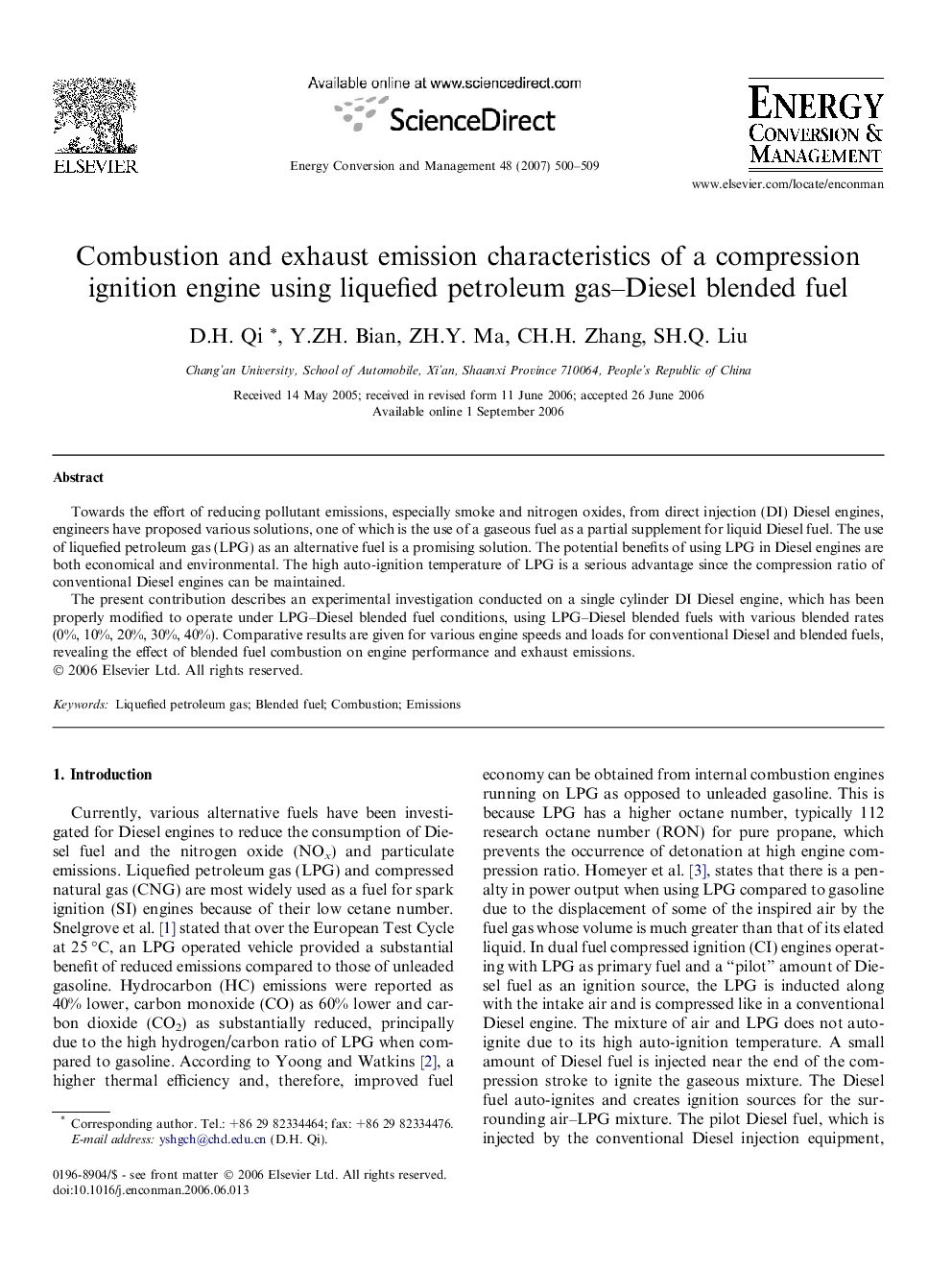| کد مقاله | کد نشریه | سال انتشار | مقاله انگلیسی | نسخه تمام متن |
|---|---|---|---|---|
| 773017 | 897772 | 2007 | 10 صفحه PDF | دانلود رایگان |

Towards the effort of reducing pollutant emissions, especially smoke and nitrogen oxides, from direct injection (DI) Diesel engines, engineers have proposed various solutions, one of which is the use of a gaseous fuel as a partial supplement for liquid Diesel fuel. The use of liquefied petroleum gas (LPG) as an alternative fuel is a promising solution. The potential benefits of using LPG in Diesel engines are both economical and environmental. The high auto-ignition temperature of LPG is a serious advantage since the compression ratio of conventional Diesel engines can be maintained.The present contribution describes an experimental investigation conducted on a single cylinder DI Diesel engine, which has been properly modified to operate under LPG–Diesel blended fuel conditions, using LPG–Diesel blended fuels with various blended rates (0%, 10%, 20%, 30%, 40%). Comparative results are given for various engine speeds and loads for conventional Diesel and blended fuels, revealing the effect of blended fuel combustion on engine performance and exhaust emissions.
Journal: Energy Conversion and Management - Volume 48, Issue 2, February 2007, Pages 500–509